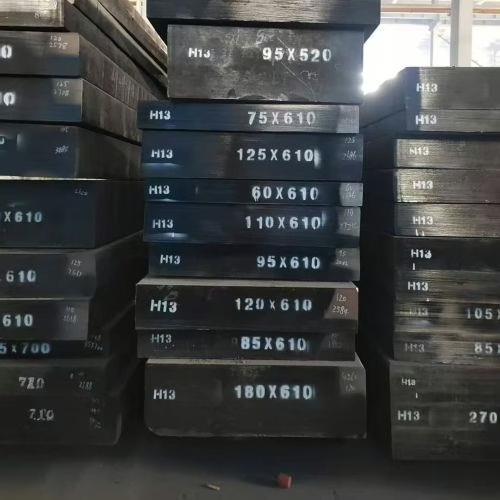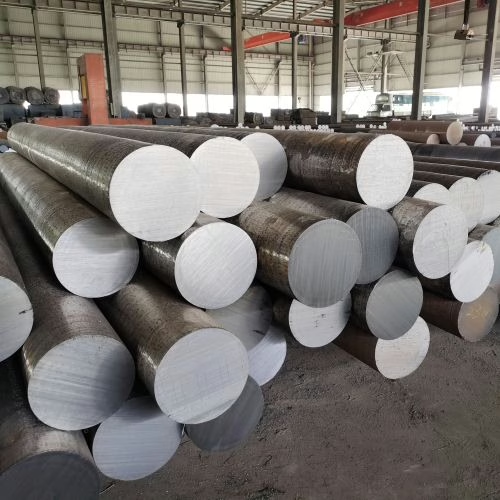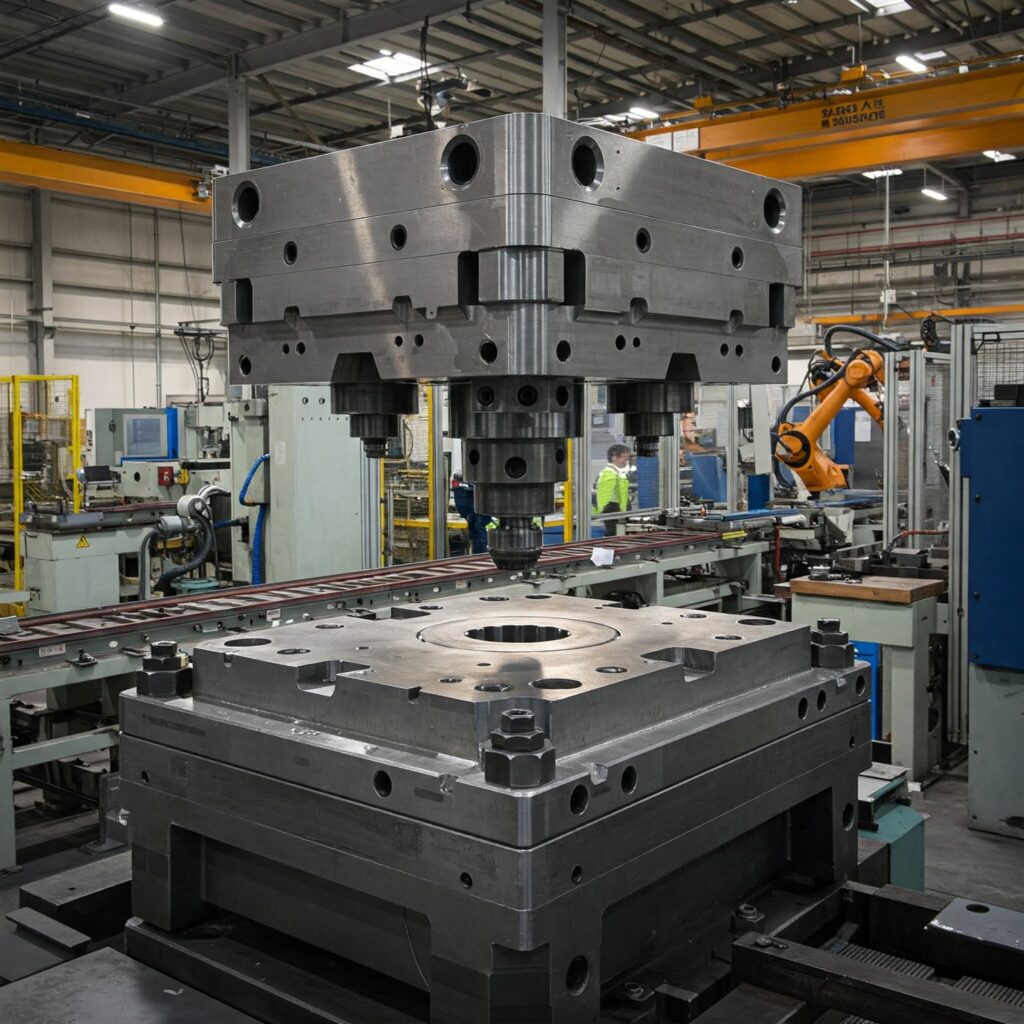Tempo estimado de leitura: 6 minutos
Principais conclusões
- H13 and P20 are two distinct types of steel: H13 is hot work tool steel, and P20 is plastic mold steel.
- H13 offers superior thermal stability and wear resistance, while P20 features pre-hardened convenience and easier machinability.
- Chemical composition differs significantly; H13 has more chromium, molybdenum, and vanadium compared to P20.
- H13 requires complex heat treatment to enhance performance; P20 is typically supplied pre-hardened for immediate machining.
- Select H13 for high-temperature applications and durability; choose P20 for cost-effective, machinable mold production.
Índice
H13 and P20 are two types of steel commonly used in tool and die manufacturing, but they differ significantly. H13 is a hot work tool steel, while P20 is a plastic mold steel. Although both are widely used in the tooling industry, they exhibit distinct differences in their fundamental chemical composition, thermal properties, and optimal application environments. Therefore, material selection must be determined based on the specific application, as this directly impacts mold performance, service life, and cost-effectiveness.
Core Identity and Classification
Aço para ferramentas H13, known as aço para ferramentas de trabalho a quente, is a high-alloy steel containing 5% chromium (Cr) specifically designed for applications requiring repeated operation under high temperatures and heavy loads. Following appropriate heat treatment, H13 can achieve tensile strengths exceeding 2070 MPa (or 300 ksi). It is highly suitable for applications such as die casting molds, hot forging, and hot extrusion. H13 is also known by other international designations, including DIN 1.2344 or UNS T20813.
Aço P20 is a low-carbon mold steel that serves as a specialist material in mold manufacturing, particularly for plastic molds. A key characteristic of P20 is that it is typically pre-treated at the factory and delivered in a “pre-hardened” state, possessing a certain hardness level, usually between 28 and 40 HRC. The most common hardness value is 32 HRC. Mold manufacturers receiving this material can skip the heat treatment step and proceed directly to machining, offering significant convenience. P20 and its equivalent grade, DIN 1.2311, are extensively used in the production of plastic injection molds and are sometimes employed for zinc die casting molds.


Chemical Composition Comparison
Compared to P20, H13 exhibits significant differences in chemical composition, containing higher levels of chromium (Cr), molybdenum (Mo), and vanadium (V).
| Alloying Element | H13 (Typical Range, wt%) | P20 (Typical Range, wt%) | Role and Impact |
| Carbono (C) | 0.32% to 0.45% | 0.28% to 0.40% | Base hardness and strength capability. |
| Cromo (Cr) | 4.75% to 5.50% | 1.40% to 2.00% | Primary alloying element providing hardenability and tempering resistance. |
| Molibdênio (Mo) | 1.10% to 1.75% | 0.30% to 0.55% | Contributes to secondary hardening and heat resistance. |
| Vanádio (V) | 0.80% to 1.20% | Typically absent/low | Key differentiator: Higher V content leads to hard vanadium carbides for enhanced wear resistance. |
Heat Treatment Requirements and Microstructure
The most significant feature of P20 is that it is typically supplied in a pre-hardened state, already possessing a hardness of 30 to 40 HRC upon leaving the factory. Mold manufacturers receiving P20 material usually do not require additional high-temperature heat treatment and can proceed directly to machining. This significantly streamlines the manufacturing process. Most importantly, it avoids potential distortion and dimensional changes that could occur during final heat treatment, making it highly suitable for precision mold manufacturing. Of course, P20 can also be hardened after machining if required. For example, when used in plastic molds, it is sometimes subjected to carburizing to achieve surface hardness up to 65 HRC. However, its resistance to softening during high-temperature tempering is relatively low.
The heat treatment of H13 is significantly more complex, yet it is essential for achieving its outstanding high-temperature performance. H13 is an air-hardening steel with deep hardenability. Even molds with substantial cross-sections can be quenched using air cooling, which helps minimize residual stresses generated after quenching. To achieve optimal toughness and tool life, H13 undergoes multiple tempering cycles. A typical process involves quenching at 1020°C (1800°F), followed by two tempering cycles at 610°C (1130°F). This high-temperature tempering thoroughly relieves stresses and stabilizes microstructural properties, making it highly suitable for high-temperature applications.
H13 steel is susceptible to decarburization during heat treatment. For example, during normalizing at 1040-1065°C, severe decarburization occurs on the surface of H13, making it highly susceptible to cracking. Therefore, when performing heat treatments such as annealing and quenching on H13, it must be carried out under a protective atmosphere—such as using vacuum furnaces, inert atmosphere furnaces, or neutral salt bath furnaces—to prevent decarburization.
Performance and Application Comparison
The distinct heat treatment states and compositions lead to very different performance characteristics:
| Propriedade | H13 (Heat-Treated, High Hardness) | P20 (Pre-Hardened, Medium Hardness) | Insight |
| Dureza típica | 45–54 HRC | 28–40 HRC | H13 operates at higher strength levels. |
| Thermal Resistance | High red hardness; maintains strength at elevated temperatures (up to ∼650°C or higher) | Low to medium resistance to softening | H13 is superior for true hot-work applications. |
| Resistência ao desgaste | Good/High, due to V-carbides | Low to medium. Can be improved significantly via carburizing | H13 has intrinsic high wear resistance; P20 relies on surface treatment for abrasive applications. |
| Usinabilidade | P20 is generally easier to machine, especially in the pre-hardened condition. | Excellent/Very Good (often considered the most easily machined mold steel) | P20 is generally easier to machine, especially in the prehardened condition. |
| Polibilidade | Excellent, especially when ESR-refined (used for mirror finishes/automotive lenses) | Excellent polishability, though specialized P20 variants may be preferred for critical finishes | Both offer high polishability for mold applications. |
Summary of Selection Criteria
Simply put, choosing between H13 and P20 primarily depends on operating temperature and manufacturing priorities.
H13 has exceptional thermal stability, secondary hardening properties, and high wear resistance. If your application meets the following conditions, H13 is the more suitable choice: high operating temperatures, repeated thermal cycling, and requirements for high strength in the mold core.
If you prioritize exceptional machinability and minimal post-machining deformation while using pre-hardened materials, P20 offers the most cost-effective solution. P20 is primarily used for plastic injection molds or die casting of low-melting-point alloys such as zinc alloys.


